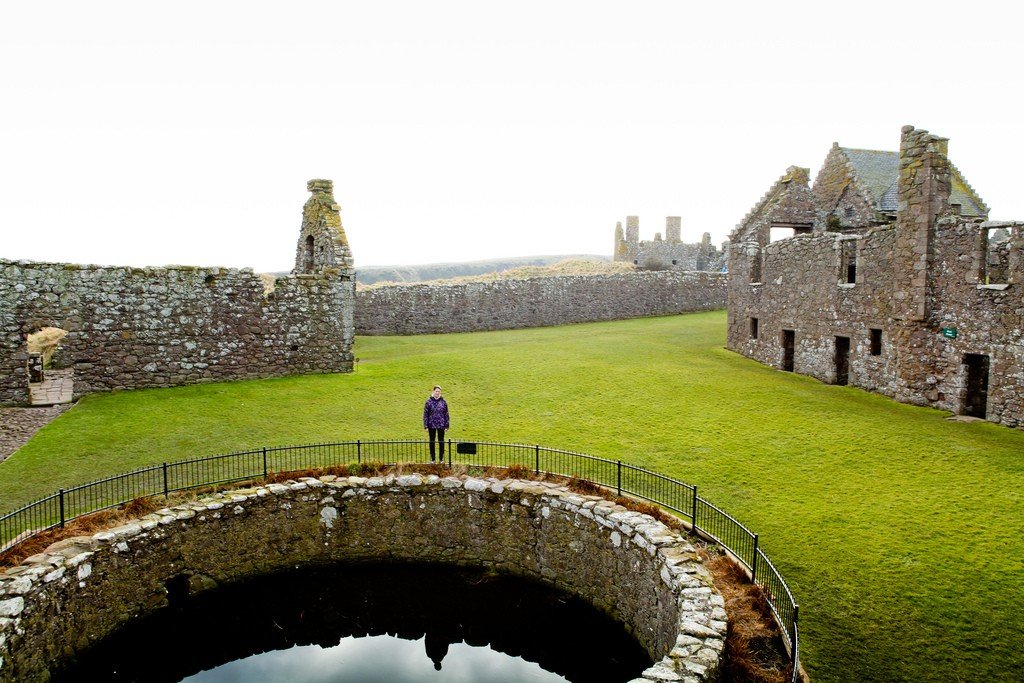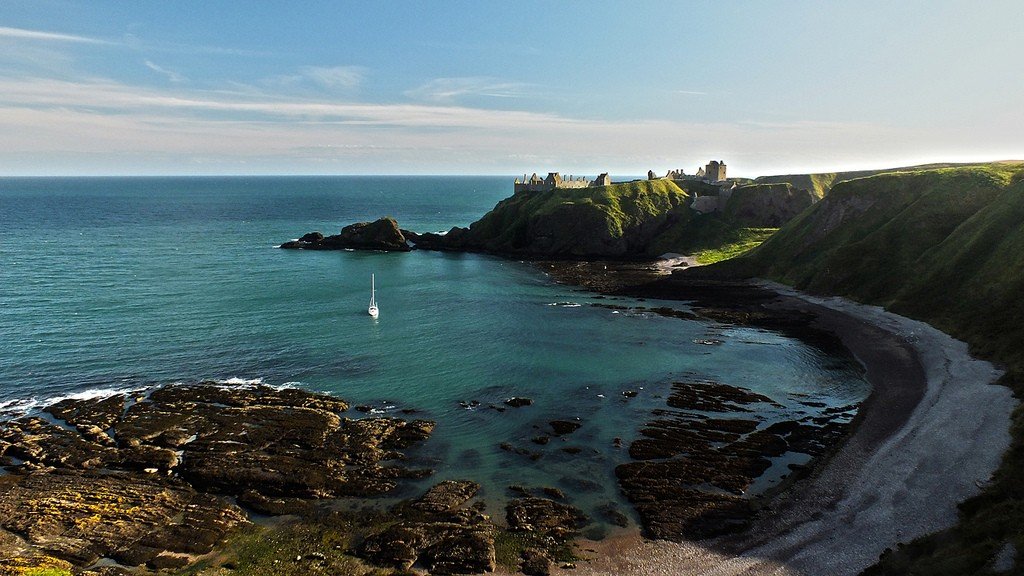









Video: Dunnottar Castle
Highlights
The name of the castle is believed to have come from the ancient Pictish language. The Picts had a word “dun” meaning “fortress” or “fortification”. It is noteworthy that the stone walls and picturesque coastal landscapes have been filmed many times in feature films.
.
Nowadays, Dunnottar Castle is in a dilapidated state and is the property of the Cowdray family. It is very popular with tourists and is considered hardly the most visited attraction in Scotland.
There are 11 structures on the 50-meter-high cliff – defensive structures, several dwellings, a smithy, storehouses, stables and a chapel. Of particular interest are the underground prison and an ancient well used by many of Scotland’s heroes. The castle also has a museum.
.Tourists
Dunnottar is open to tourists daily: from April to September from 9.00am to 6.00pm, and from October to March from 9.00am to 5.00pm. A ticket costs £7 for adults and £3 for children.
.History of Dunnottar Castle
Exact data about the time of construction of the first fortress has not survived. It is only known that in the 5th century Bishop Ninian landed on the coast and came here as a missionary. He erected a small Christian chapel on the shore, which was later surrounded by a fortress. According to chronicles, enemy tribes besieged these fortifications in 680.
.The fort on the rock played a decisive role in several major battles and, thanks to King William I, was turned into the administrative center of the state at the beginning of the 12th century. In 1276 a parish church was erected in place of the old chapel. In 1296 King Edward I took possession of the fortifications, but the next year the castle Dunnottar captured the fighter for Scottish independence William Wallace. He brutally massacred the English military garrison and burned it in the castle church.
In 1336, King Edward III sent soldiers, masons and carpenters to the dilapidated Dunnottar and they rebuilt the ancient fort. The castle became a staging post for military companies, but it remained in English hands for only a year. Scottish troops, led by Andrew Murray, managed to retake Dunnottar. Then Scottish Marshal William Keith ordered the coastal fort to be fortified. All the wooden buildings were demolished and replaced by stone walls and buildings over the cliffs.
.
In the 1930s of the 16th century, Dunnottar Castle was turned into a palace, which was visited by many royalty. The castle served as a royal residence and continued to be an impregnable fort. It was Dunnottar that allowed King Charles II to defend himself against Oliver Cromwell’s troops for eight months. When the attackers finally broke into the castle, they did not find what they wanted to see – the crown, sword, sceptre and royal papers. As it turned out, the royal regalia had been safely hidden beneath the floor of a nearby church, only to be returned during the Restoration of the monarchy. Today they are kept in the Edinburgh Museum.
.In 1715, the owner of Dunnottar Castle, Lord Marshal George Keith, was convicted of associating with the Jacobites and stripped of his property. The York Building Company became the owner of the castle and removed almost all of the property from the ancient buildings. In the 1920s, the new owner of the castle, Viscountess Cowdray, began to restore the abandoned buildings. Today Dunnottar Castle belongs to her descendants.
.How to get there
Dunnottar Castle stands on the seaside, 30 km south of the major Scottish city of Aberdeen and 3 km south of the seaside town of Stoneyhaven. The nearest airport is in Aberdeen. From there, tourists access Dunnottar by buses number X7 and 107, which stop within walking distance of the castle.
.The distance from Edinburgh to Dunnottar is 178 kilometers. You must first get to Stonhaven by train (2 hours) and from there to the castle by shuttle bus.
.